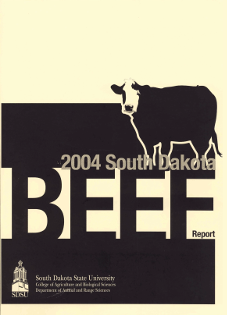Document Type
Report
Report Number
2004-17
Publication Date
2004
Summary
Quantitative data is lacking on competition between prairie dogs and cattle for forage on mixed-grass prairie pastures. The objective of this study was to determine the disappearance of vegetation attributable to cattle and prairie dogs on pastures with prairie dog towns. During the summers of 2002 and 2003, biomass estimates were made periodically on three mixed-grass prairie pastures in south central South Dakota that had varying degrees of prairie dog town coverage (percent of pasture area). Two types of grazing exclosures were established. Cattle exclosures allowed grazing by prairie dogs only. Cattle/prairie dog exclosures excluded both herbivores. Permanent plots outside cages were established that allowed grazing by both species. Biomass estimates on individual vegetation species were obtained both inside the exclosures and on permanent plots outside the exclosures two times in 2002 and 2003. Forage removed was estimated and compared for cattle alone, prairie dogs alone, and cattle and prairie dogs together in each year. Forage removed by prairie dogs on the on-town sites was nearly three times as great as forage removed by cattle on the on-town sites for the June and July sampling periods. Cattle removed two times more forage on off-town sites than on on-town sites. Total forage removed on on-town sites (cattle + prairie dogs) was almost two times greater than on off-town sites. Livestock forage was significantly reduced on prairie dog towns compared to unoccupied sites. Classic carrying capacity calculations overestimate forage availability when prairie dog towns are present. Stocking rates on pastures with prairie dog towns should be adjusted to account for forage disappearance due to prairie dogs.
Number of Pages
5
Format
application/pdf
Language
en
Publisher
South Dakota State University
Rights
Copyright © 2004 South Dakota State University
Recommended Citation
Stoltenberg, Matthew B.; Johnson, Patricia S.; Smart, Alexander J.; and Xu, Lax, "Effects of Prairie Dogs and Cattle on Vegetation Disappearance on Prairie Dog Towns in Mixed-Grass Prairie" (2004). South Dakota Beef Report, 2004. 18.
https://openprairie.sdstate.edu/sd_beefreport_2004/18


